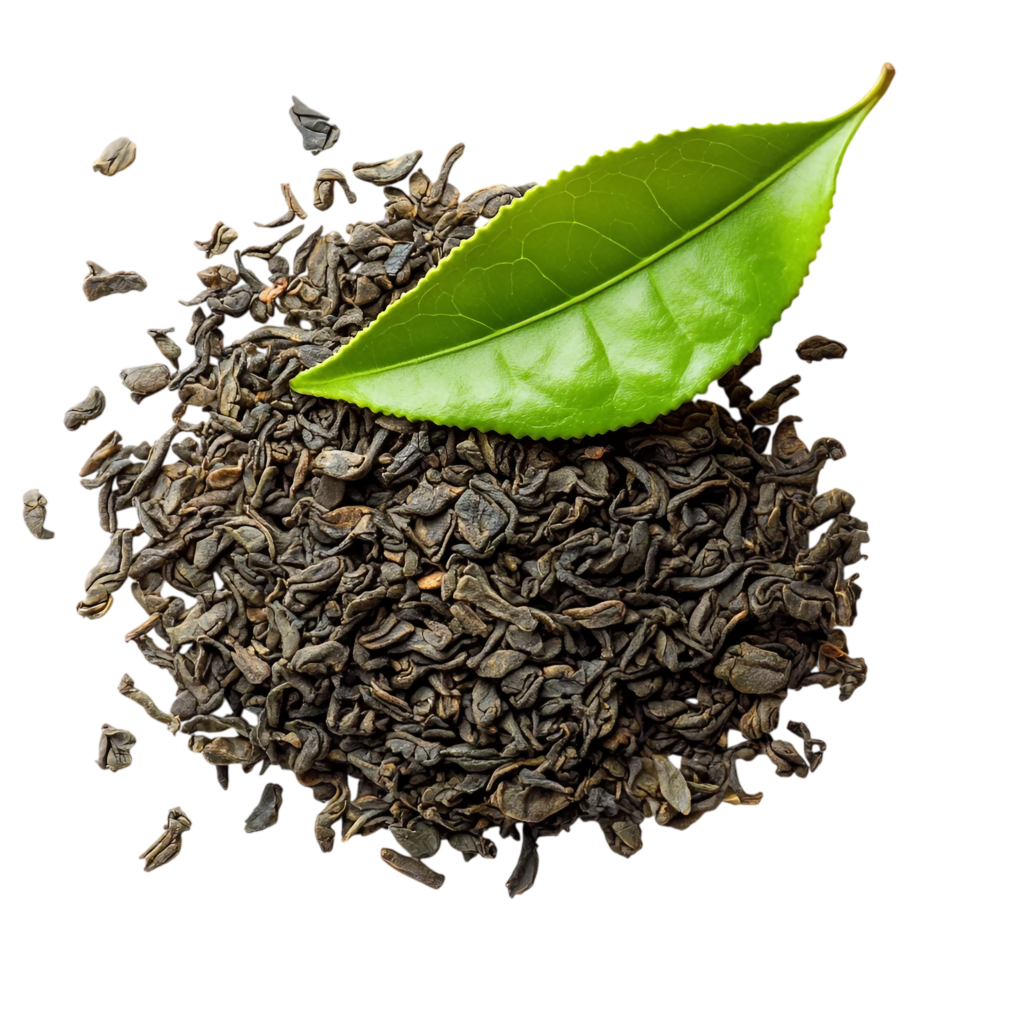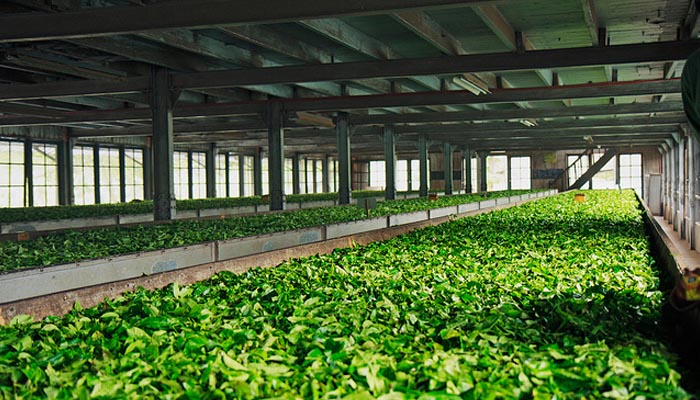Black Tea Process

The Appearance of Black Tea
Black tea is traditionally crafted into strip-like or granular shapes, each known for producing a rich, reddish-brown brew. The finest black teas come from large-leaf and medium-leaf varieties, which are ideal for capturing the depth and complexity of flavor black tea is known for.
To achieve the desired appearance and quality, the tea leaves must be fresh, tender, thick, and covered with fine pekoe hairs. These characteristics help preserve the leaves’ freshness and contribute to the final tea’s aroma and strength.
The black tea production process consists of five key stages:
Withering, Rolling, Fermentation, Drying, and Sifting—each essential to unlocking the flavor, texture, and visual identity of the finished tea.
Step 1: Withering
Withering is the first and one of the most critical steps in black tea production. Its purpose is to gently reduce the moisture content of freshly plucked tea leaves, making them soft, pliable, and ready for rolling. Proper withering ensures the leaves remain intact and are easier to shape into strips without breaking.
There are three main methods of withering:
☀️ Sun Withering: The fastest and most natural method, relying on sunlight.
🏠 Indoor Withering: Used when sunlight is insufficient. This method allows for better control and consistency, producing leaves of excellent quality.
🔥 Trough Withering: A modern method that uses hot air blowers to remove moisture. It overcomes weather limitations and ensures uniform results.
Each method serves the same goal: to prepare the tea leaves for the rolling stage by reducing their water content while preserving their essential qualities.


Step 2: Rolling
Rolling is a crucial step in shaping the appearance and defining the quality of black tea—particularly in strip-shaped varieties. During this process, the tea leaves are gently twisted and compressed, which breaks the cell walls and releases the internal juices, known as cell sap.
This release of cell sap triggers the enzymatic oxidation of polyphenols, laying the foundation for black tea’s signature aroma, color, and flavor.
Rolling also forms the tight, thin strips characteristic of high-quality black tea. As the leaves shrink and twist, they take on a refined, wiry appearance. The exposed cell sap coats the surface of the leaves, giving them a dark, glossy sheen once dried.
Additionally, this process helps concentrate soluble compounds within the leaves, which enhances the richness and density of the brewed tea.
Step 3: Fermentation (Oxidation)
Fermentation, also known as oxidation, is the heart of black tea processing—responsible for transforming fresh green leaves into the aromatic, reddish-brown tea we know as black tea.
This step involves a series of enzyme-driven chemical reactions, primarily the oxidation of polyphenols. As the enzymes interact with oxygen, the chemical structure of the tea changes—developing the tea’s distinctive color, aroma, and flavor.
During fermentation, the leaves gradually shift from green to a rich coppery-red hue, a visual cue that oxidation is taking place. Alongside polyphenols, other natural compounds within the leaf also evolve, contributing to black tea’s smoothness, depth, and complexity.
The level of fermentation must be carefully controlled—too little, and the tea will be underdeveloped; too much, and the flavor becomes dull. This stage ultimately defines the character and quality of the final tea.


Step 4: Drying (Firing)
Once fermentation has reached the desired level, the tea leaves are moved to the drying stage, also known as firing. This step involves carefully heating the leaves in a desiccator or firing chamber at temperatures between 99–104°C (210–220°F).
Drying serves two essential purposes:
It stops the enzymatic oxidation by deactivating the enzymes.
It removes remaining moisture, ensuring the tea can be stored without spoiling.
As the leaves dry, they shrink, darken, and take on their final appearance—the familiar dark, twisted form of black tea. This stage locks in the tea’s aroma, flavor, and color, marking the completion of the manufacturing process.
The result is a beautifully finished black tea—rich in character and ready to be sifted and sorted for packaging.
Step 5: Sifting and Grading
Rolling is a crucial step in shaping the appearance and defining the quality of black tea—particularly in strip-shaped varieties. During this process, the tea leaves are gently twisted and compressed, which breaks the cell walls and releases the internal juices, known as cell sap.
This release of cell sap triggers the enzymatic oxidation of polyphenols, laying the foundation for black tea’s signature aroma, color, and flavor.
Rolling also forms the tight, thin strips characteristic of high-quality black tea. As the leaves shrink and twist, they take on a refined, wiry appearance. The exposed cell sap coats the surface of the leaves, giving them a dark, glossy sheen once dried.
Additionally, this process helps concentrate soluble compounds within the leaves, which enhances the richness and density of the brewed tea.

Our Story
Discover Our Journey So Far
We believe that everyone has the potential to achieve greatness and fulfill their dreams. That\’s why we are committed to providing innovative solutions and exceptional services that empower individuals to overcome obstacles and turn their aspirations into reality. With a strong focus on customer satisfaction and a team of experienced professionals, we strive to deliver unparalleled results and make a positive impact in the lives of our clients. Join us on this journey of empowerment, and let us help you make your dreams come true.


